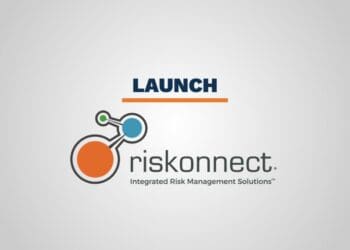Overcoming Analysis Paralysis
If you’ve been part of a decision-making collective, you’re probably familiar with the phrase “death by committee.” When there are too many cooks in the proverbial kitchen, it can be nearly impossible to come to a consensus – or even land on a solution in a reasonable amount of time. Linda Henman offers her insight on how to jump-start decision-making.
Early in 1998, my doctoral committee met to approve my dissertation proposal. Or at least I thought that was the goal of the meeting. As it turns out, they met to discuss all the reasons for their disapproval: My research thesis was inconsistent, I had proposed a flawed research methodology and I had formulated inane interview questions. After the meeting, I sat crestfallen and dejected in the lounge staring into space. A fellow doctoral candidate joined me and asked about my pained look. I explained the number of things my committee had agreed were wrong with my dissertation. She broke into a smile and said, “Linda, at least you got them to agree on a bunch of stuff!”
I made the changes the committee required and then met them two months later to discuss final steps before graduation. This time I had a different mindset, however. I wanted to graduate, not write the perfect dissertation. When people started suggesting changes, I said, “There are an infinite number of ways to make this different. I want to finish it.” It’s hard to cause stunned silence among a dissertation committee, but that statement did it.
Since that day, I have seen versions of this decision-by-committee in my client organizations. They too delay results and compromise their own success by doing the following:
- No one person owns a decision. Instead, people with different agendas think they have the right to weigh in on things that don’t fall under their purview.
- People vacillate, not because they don’t have a good solution but because they’re unsure it’s the best possible answer. They lose time and money trying to find a perfect solution.
- Leaders abdicate their responsibility and authority in a misguided quest for consensus. Getting everyone to agree takes too long and seldom increases the caliber of the decision.
- Leaders fail to realize that those who oppose a decision are often the very people who will be most threatened by it.
There’s always a better way, a cheaper alternative or a faster lane. To move beyond indecision and good intentions, we need to realize there are many good ways. Decisive, successful people don’t waste time and energy finding the perfect solutions. Instead, they realize that if they stick with a good decision, probably they will be successful.
To end indecision, we have to stop falling victim to the idea of the single “right way” of doing anything. Putting an end to this kind of thinking, by the way, will also end micromanaging when bosses realize others can discover a good way — their own way — of completing a task.



 Dr. Linda Henman is one of those rare experts who can say she’s a coach, consultant, speaker, and author. For more than 30 years, she has worked with Fortune 500 Companies and small businesses that want to think strategically, grow dramatically, promote intelligently, and compete successfully today and tomorrow. Some of her clients include Emerson Electric, Boeing, Avon and Tyson Foods. She was one of eight experts who worked directly with John Tyson after his company’s acquisition of International Beef Products, one of the most successful acquisitions of the twentieth century.
Linda holds a Ph.D. in organizational systems and two Master of Arts degrees in both interpersonal communication and organization development and a Bachelor of Science degree in communication. Whether coaching executives or members of the board, Linda offers clients coaching and consulting solutions that are pragmatic in their approach and sound in their foundation—all designed to create exceptional organizations.
She is the author of Landing in the Executive Chair: How to Excel in the Hot Seat, The Magnetic Boss: How to Become the Leader No One Wants to Leave, and contributing editor and author to Small Group Communication, among other works.
Dr. Henman can be reached at
Dr. Linda Henman is one of those rare experts who can say she’s a coach, consultant, speaker, and author. For more than 30 years, she has worked with Fortune 500 Companies and small businesses that want to think strategically, grow dramatically, promote intelligently, and compete successfully today and tomorrow. Some of her clients include Emerson Electric, Boeing, Avon and Tyson Foods. She was one of eight experts who worked directly with John Tyson after his company’s acquisition of International Beef Products, one of the most successful acquisitions of the twentieth century.
Linda holds a Ph.D. in organizational systems and two Master of Arts degrees in both interpersonal communication and organization development and a Bachelor of Science degree in communication. Whether coaching executives or members of the board, Linda offers clients coaching and consulting solutions that are pragmatic in their approach and sound in their foundation—all designed to create exceptional organizations.
She is the author of Landing in the Executive Chair: How to Excel in the Hot Seat, The Magnetic Boss: How to Become the Leader No One Wants to Leave, and contributing editor and author to Small Group Communication, among other works.
Dr. Henman can be reached at 








